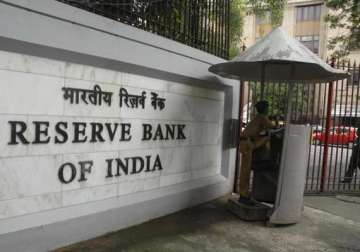Mumbai: The Reserve Bank today said it has received USD 15.2 billion so far from the special swap windows opened to attract FCNR-B deposits as well the special ECB window facility for banks.
“As of November 6, we have received USD 15.2 billion under the special concessional window for swapping foreign currency non-resident (banks) (FCNR-B) deposits and overseas foreign currency borrowings for banks,” RBI said in a statement late this evening.
These windows will remain open till the end of this month, and many analysts have pegged the inflows from these instruments to be in the range of USD 20-25 billion. The Reserve Bank had announced these schemes on September 4, the day the new Governor Raghuram Rajan took over to contain the flight of the rupee.
It can be noted that the rupee was the worst performing Asian currency between end May and till September 3, losing close to 30 per cent from the beginning of the fiscal.
However, post these measures the rupee rallied and in September alone the rupee had rallied more than 10 per cent. However, between April 2 and today, the rupee is down 15 per cent.
These two windows, coupled with the one for oil companies under which RBI directly sells dollars to them, apart from the sentiment booster that Rajan offered in his inaugural address have been the main reasons for the massive recoup of the rupee. Oil companies need USD 9-10 billion every month to pay for their imports.
However, today the unit plunged 77 paise to one-month low against the dollar at 62.39 on renewed fears that the US Fed would look at scaling back its stimulus soon as the latest US data showed the world's largest economy is clawing back earlier than expected.
The rupee resumed lower at 61.93 as against the last closing level of 61.62 per dollar but dropped further to close at over one-month low, showing a loss 1.25 per cent from its last close, which is the sharpest fall in two months.
In fact, the plight of the rupee started after the US Fed in its May 24 meeting hinted at shutting the easy money tap-repurchase of USD 85 billion worth of T-bills every month. This had led to a spike in US interest rates, enticing FIIs to plumb for better returns back home by exiting emerging markets.
This has led to scary situation on the already high current account position in the country, leading to battering of the rupee.
As a result, FIIs had sold domestic debt worth more than USD 13 billion between the May-end Fed warning and early September and a couple of billions in stocks.
Latest Business News
